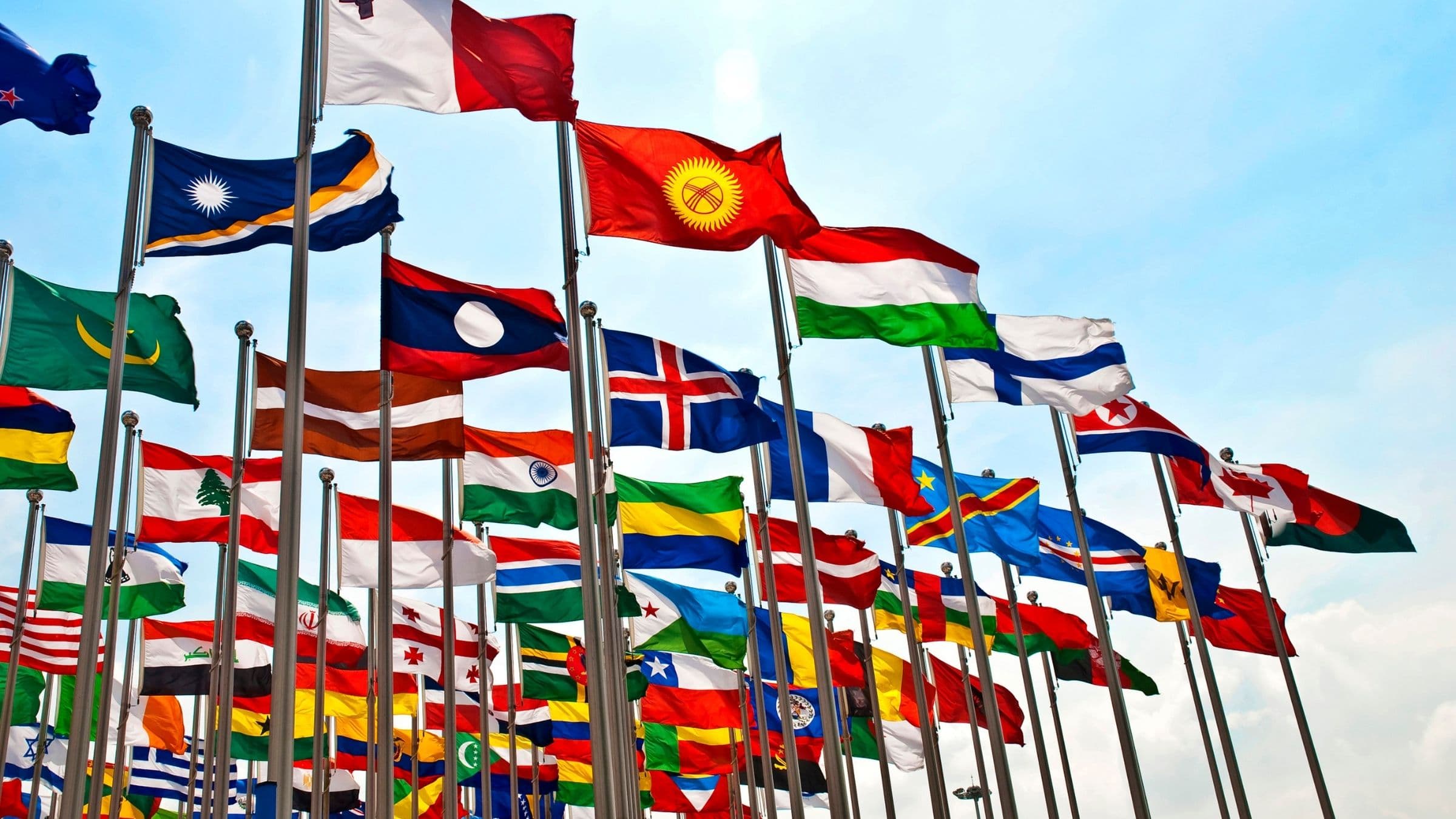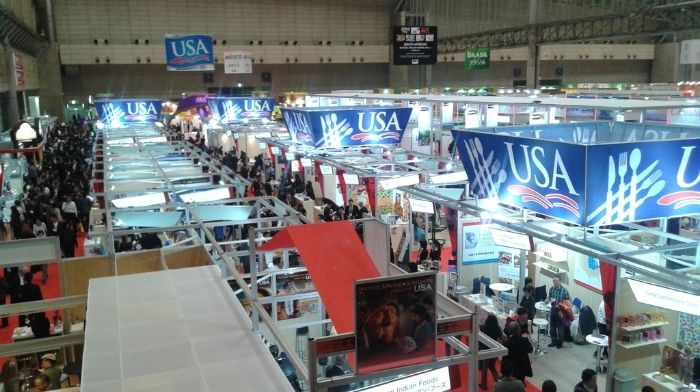
COUNTRY PROFILE
Discover more about the Singapore market including overviews about the retail, foodservice, and food-processing sectors. Events, resources, and more are linked throughout the profile.

$555.4 million
total U.S. processed food exports to Singapore in 2023

$18.9 billion
total agricultural and related product import in 2022

5.9 million
total population in 2023
Euromonitor reports that after strong economic performance in 2021, Singapore experienced a considerable slowdown in 2022, due to persisting global supply chain disruptions, rising inflation and weaker foreign demand. In 2023, the country’s economic development continued to decelerate amid continuing global inflationary pressures, tightening monetary policy, and persisting economic uncertainties. To shield from economic pressures, Singapore’s government is set to further support households and businesses.
Singapore is very dependent on imports of food and energy, given the small size of its geographical territory that prohibits agriculture, while the country has limited natural resources. Total goods imports accounted for 101.8% of GDP in 2022. The city-state’s open economy and high reliance on imports make Singapore’s external sector extremely vulnerable to global fluctuations in trade, with demand and supply changes considerably affecting the economy.
Singapore is expected to remain one of the wealthiest nations in the world. An advanced technology sector and extensive free trade policies have cemented Singapore’s image as an attractive location for international companies, contributing significantly to the increase in the highest earning class.
The wealthy and affluent consumer segment is forecast to grow continuously in both numbers and net wealth, supported by a favorable tax regime, driving expenditure on “inconspicuous consumption” categories, such as education, health goods, and medical services. Also, the country will continue to boast one of the highest savings per capita levels globally, forecast to continue rising over the period to 2030. These combined factors will help to support discretionary spending in Singapore.
The U.S.-Singapore Free Trade Agreement (FTA) has been in effect since 2004. Singapore also has many bilateral and regional FTAs including with Australia, China, Costa Rica, India, Japan, Jordan, New Zealand, Republic of Korea, Panama, Peru, Sri Lanka, European Union, United Kingdom, and Turkey. Singapore is a participant in the Regional Comprehensive Economic Partnership regional trade negotiations, which include the 10 Association of Southeast Asian Nations (ASEAN) countries plus Australia, China, Japan, Republic of Korea, India, and New Zealand.
Finally, the city-state is a member of the 11-member Comprehensive and Progressive Agreement for Trans-Pacific Partnership (CPTPP), which was formally created in March 2018. At the end of 2020, Singapore became a member of the largest trade bloc in the world, the Regional Comprehensive Economic Partnership (RCEP)
The population reached 5.9 million in 2023, (CIA World Factbook Est.), up from 4.3 million in 2000. By 2030, officials expect the population to be 6.9 million. Singapore’s society is aging even while the population grows. The median age was 38.9 years in 2023, nearly 5.2 years greater than in 2000. The number of elderly (those over 65 years) represented 13% of total population in 2023 and the share will rise to 25.3% by 2030.
The proportion of the population aged 65 or over is growing and the youth population is shrinking. Singapore is projected to experience one of the largest percentage point increases in the elderly share of the population at 21% between 2019 and 2050, according to the United Nations (UN). The working-age population (aged 15-64) will gradually decrease, leaving fewer workers to economically support the elderly population.
USDA’s Office of Agricultural Affairs, OAA, in Singapore, hereinafter referred to as FAS Post Singapore, reports that Singapore’s highly import dependent, multi-billion-dollar food industry is driven by robust consumer spending, high disposable incomes, and intense urbanization. The country’s trade and regulatory policies are focused on ensuring a consistent foreign supply of safe, high-quality food and agricultural products. Singapore’s total agricultural and related product import in 2022 reached US$18.9 billion, roughly 9% of which was sourced from United States. (Source: Trade Date Monitor.)
Singapore imported US$555.4 million in U.S. processed food exports in 2023, a rather staggering decrease of 27%, ranking third in the region, and 59% of the agricultural total. When processed food exports are more than half of the agricultural total and higher than the consumer-oriented sector (US$496.5 million) it makes Singapore a premium destination for high value-added foods. But the loss equates to US$207.4 million which adds to the U.S. trade deficit in food and agricultural products.
Top U.S. exports of processed foods to Singapore in 2023 included:

$3.3 billion
estimated total value of retail sales of packaged foods in 2023

23.4%
increase in retail sales since 2019

$4 billion
expected value of packaged food retail sales by 2028
Euromonitor has estimated the retail sales value of packaged foods in Singapore at nearly US$3.3 billion in 2023. This represents an increase of 23.4% or US$625.3 million since 2019. They have also forecast the packaged food retail sales to reach US$4 billion by 2028, an increase of 17.1% or US$594.5 million from 2024.
High growth products in the forecast include:
FAS Post Singapore reports that Singapore’s retail foods sector is highly developed and very competitive, with total consumer-oriented imports in 2022 over US$11 billion. It has returned to normalcy post pandemic. Three key players dominate the sector: NTUC Fair Price Cooperative, Dairy Farm International Holdings, and Sheng Siong Supermarket Chain. Singapore’s food retail sector has returned to normalcy post pandemic. It is one of the most highly developed and competitive markets in the Southeast Asia region. The industry is comprised of a range of large supermarkets/hypermarkets, convenience stores, “mom and pop” traditional stores, and specialty retailers.
Singapore’s economy is experiencing a slowdown due to a confluence of factors including the conflict in Ukraine, shipping delays, and general inflation. Despite these factors, the outlook for the sector is strong as the consumer market is supported by high disposable incomes. The Singapore Government continues to provide economic stimulus measures and monetary aids to both businesses and individuals to mitigate economic hardship.
NTUC Fairprice is Singapore’s largest retailer (supermarkets, hypermarkets, gas marts and convenience stores), with a market share of 35%. Their retail formats include FairPrice, Finest, FairPrice Xtra, and FairPrice Xpress supermarkets or hypermarkets and Cheers is their convenience store. Housebrand/Private label lines include: FairPrice, Gold, Home Proud, Pasar, and Pasar Organic. Their exclusive brands are Kirkland Signature, 365, and Tesco. They are all known to procure from consolidates, distributors, local importers and direct from exporters. They target all income groups with different retail formats.
Dairy Farm Group is Singapore’s second largest retailer (supermarkets, hypermarkets, gourmet stores and convenience stores). They have a market share of 15%. Their retail format includes Cold Storage, CS Fresh and Giant supermarkets, and 7-Eleven convenience stores. Their Housebrand/Private label lines are Meadows, Papa Alfredo, Captain Catch, and Giant. Their exclusive brands include Waitrose & Partners, Duchy Organics, and Alison’s Pantry. They are known to procure from consolidators, distributors, local importers, and direct from exporters. They target middle- and upper-income groups while the hypermarkets target middle to lower income groups.
Singapore’s third largest retailer is Sheng Siong. Their retail formats include Supermarkets with “wet & dry” market experience. They are across the island, mostly in suburban neighborhoods. Their Housebrand/Private label lines include Happy Family, Tasty Bites, Jean Fresh, Homeniks, Heritage Farm, Bake For You, and PowerPlus. They are known to procure from distributors, local importers, and direct from exporters. They target middle to lower income groups.
Convenience is a key consideration in Singapore, especially for time-strapped working consumers. The preference is towards modern grocery retailers that offer one-stop shopping experience. There are an increasing number of independent specialty retail stores selling premium gourmet and/or organic and wholesome/natural food products. Premium supermarkets and independent specialty retail stores located in upscale residential areas have seen stronger growth as they cater to upper income consumers and expatriates with higher disposable income.
Singapore is experiencing high saturation in convenience stores. As many convenience stores are located near each other, competition is intense. To reduce costs, many convenience store operations are making use of cutting-edge technology to pilot unmanned stores/kiosks.
FAS Post Singapore reports that top prospective U.S. products for the sector include food preparations, dairy, fresh fruit, processed vegetables, beef and poultry products, bakery goods, cereals and pasta, and tree nuts.

$16 billion
expected revenue in the HRI sector in 2023

$11 billion
revenue spending in the HRI sector in 2022

6.3 million
visitors in 2022, as COVID-19 restrictions eased
FAS Post Singapore reports that the country’s hotel, restaurant, and institutional (HRI) sector is also highly developed and competitive. As COVID-19 restrictions eased, the country hosted 6.3 million visitors in 2022, with revenue spending at US$11 billion. The tourism sector is expected to recover to pre-pandemic levels in 2024. Combined with the return of major summits and an upswing in domestic patronage, the HRI sector is looking at significant potential growth. Singapore is expecting 12 to 14 million arrivals and up to $16 billion in revenue in 2023.
The foodservice industry, which includes hotels, restaurants, casual dining, fast food outlets and local food stalls, is highly diverse with a broad range of Asian and Western cuisines widely available. The sector continues to face challenges of escalating overhead costs of food ingredients, rent, utilities, and a general lack of skilled labor in the market.
There are 430 total properties providing 70,000 total rooms (source: SG Tourism Board in Singapore). The hotel industry is a core industry within the tourism sector and contributes about 20% of total tourism receipts. Apart from lodging, the properties make a significant portion of their revenue from the sale of food and beverages to the public. Major upscale hotel brands usually house high-end restaurants. Hotel food and beverage supplies are usually procured from local foodservice suppliers.
Singapore Airport Terminal Services Limited (SATS) is the main ground handling and in-flight catering service provider at the Singapore Changi Airport. SATS manages about 80% of the airport’s food services including airline catering, food distribution, logistics, and industrial catering. For commercial catering, SATS provides catering for large scale markets: military, hospitals, food retail stores, and event catering (including MICE – meetings, incentives, conventions, and exhibitions events. Aside from SATS, caterers in Singapore are typically small to medium sized private enterprises that provide local and international foods. They typically cater to schools, company events, private social functions, and factories.
Competition in the HRI/foodservice supply market is aggressive from certain low-cost countries in some of the U.S.’ core target markets for example, chicken (Brazil) and fish fillets (Vietnam). Competition from other quality countries, for example, Australia (freight advantages), New Zealand and some European countries (for example, France and Netherlands) because of strong and longstanding links between exporters in these countries and their loyal importers in Singapore. European exporters also benefit from demands for provenance (original origin of products) and also from very strong demand-pull from European executive chefs who work in 4-star to-6-star hotels in Singapore.
FAS Post Singapore reports that the top U.S. product prospects for the Singaporean HRI industry include food preparations and ingredients, dairy, fresh & processed fruit, pork, poultry, wine and beer, and snack foods.

$18.9 billion
total agricultural and related product imports in 2022

9%
of total agricultural and related product imports sourced from the U.S. in 2022
FAS Post Singapore reports that Singapore’s food processing sector is modest and is comprised of mainly small and medium-sized enterprises. Its main products include flavorings, sauces, ready-to-eat meals, noodles, deli meat, sausage, confectionary, chocolates, snacks, and beverages (including beer). Almost all raw materials for the Singaporean food processing industry are imported, as local agricultural production is minimal.
Singapore’s highly import dependent, multi-billion-dollar food industry is driven by robust consumer spending, high disposable incomes, and intense urbanization. The country’s trade and regulatory policies are focused on ensuring a consistent foreign supply of high-quality food and agricultural products. Singapore’s total agricultural and related product imports in 2022 reached US$18.9 billion, with approximately 9% sourced from the U.S.
Major suppliers include Australia and New Zealand (dairy products) and Malaysia and China (fresh vegetables). The U.S. is also a key supplier of dairy products, processed vegetables, fats and oils, food preparations, ingredients, and snacks. The U.S. is also a major supplier of dairy products, as well as processed vegetables, fats and oils, food preparations and ingredients, and snacks.
Most local food manufacturers are small-scale operators based in factories within industrial areas. Larger food manufacturers are usually multinational companies, and sometimes produce for the export market. Another general type of food manufacturer is involved in providing food preparation services, such as the processing of meat and vegetables, to hotels and restaurants.
Retailers import food products in bulk, and many have introduced their own house brands for certain products. For example, 7-Eleven, part of the Dairy Farm group, has commissioned food manufacturers to produce their own in-house brand sandwiches and ready-to-eat meals. Introduced in 1985, NTUC’s sub-brands under the chain’s house brand umbrella include: FairPrice Gold (premium offerings); Pasar (fresh produce, fruits, and vegetables); Pasar Organic (fresh organic produce); and Budget (everyday items). Smaller establishments tend to import food products directly from neighboring countries.
FAS Post Singapore reports that top prospective U.S. food processing ingredient products for the Singapore market include animal fats, dairy, vegetable oils, processed vegetables, tree nuts, and beef products.
